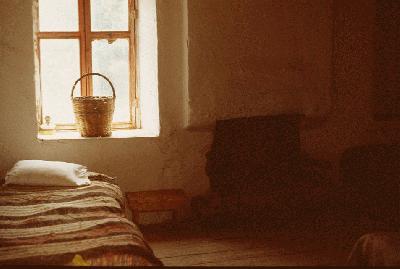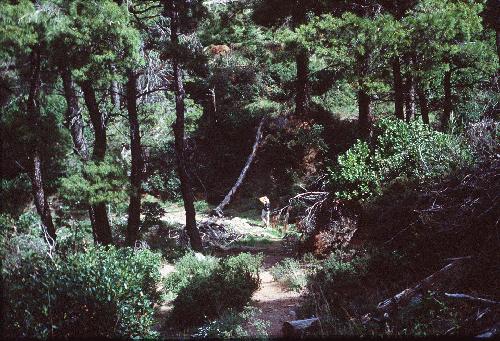
If you had to describe Skiathos and Skopelos with one word, that word would definitely be: "LUSH". Especially if one comes to walk the Northern Sporades after having walked the Cyclades, or certain mountains of Crete and Peloponese, these islands will seem extremely green.
Skiathos and Skopelos not only retain much of their forests, they also preserve big part of their old paths. Usually, these paths are intersected by newly constructed roads, and they are being kept open mostly by foreign walkers.
Hikers on Skiathos and Skopelos are unlikely to get thirsty, too hot or sunburnt. All routes are well shaded; springs with running fresh water are wide-spread; not to mention the numerous beaches, of which, Skiathos alone counts 60!
Archeology lovers won't have much to see on the two islands. Monastery architecture, as well as traditional architecture enthusiasts, will have a lot to see, especially on Skopelos. Those who want cosmopolitan life should go to Skiathos, while solitude seekers should prefer Skopelos.
Before setting off, arm yourself with a good guide, such as M.S. Dubin's Greece on Foot. The book has descriptions of one one-day loop-hike for Skiathos, and several routes for Skopelos. Don't stick too much to the descriptions tho. Much of Skiathos's ex-walking terrain has now been fenced off. On Skopelos you are likely to discover more paths than the ones described in the guide. In either case, a good map, good trail sence, good sense of orientation, and a good command of greek(to ask the locals for directions), are invaluable tools.
My favourite itineraries on Skiathos:

My favourite itineraries on Skopelos:
1.: Skpopelos town to Elios village. Crossing east-west the island through paths and forestry roads.
2.: Wandering through the forests of Mount Delphi, Skopelos' s highest (662m).
3.:Exploring the paths that connect the monasteries to the east of Skopelos town.

Special thanks to Nader Bolouri of Artline, 9 Aretousas Str., Iraklion (081-282474), for scanning my slides for this page.